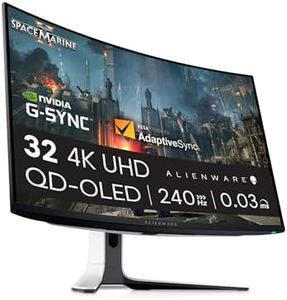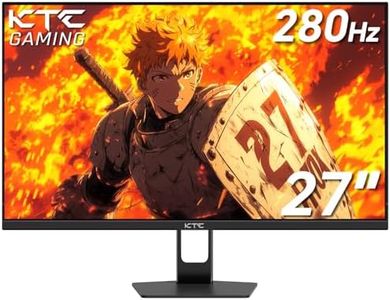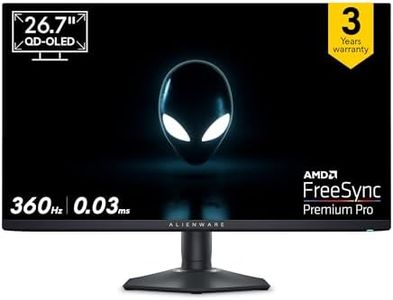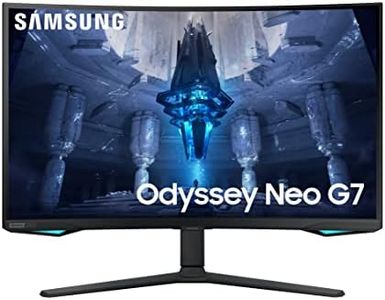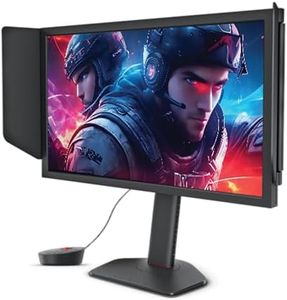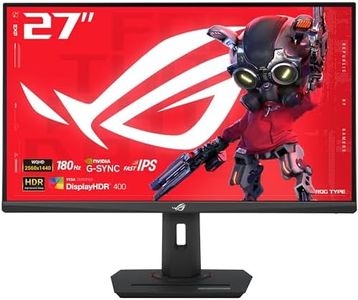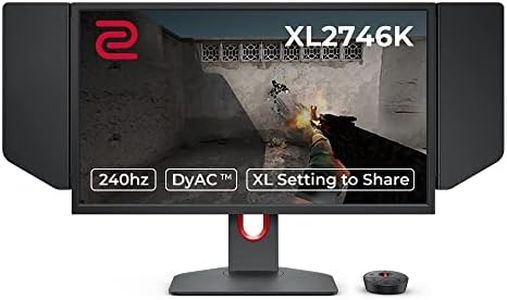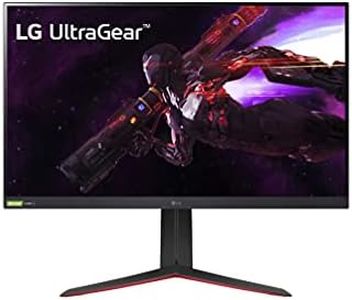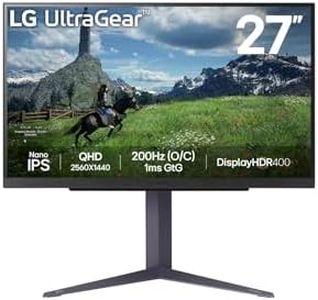We Use CookiesWe use cookies to enhance the security, performance,
functionality and for analytical and promotional activities. By continuing to browse this site you
are agreeing to our privacy policy
10 Best Console Gaming Monitors
From leading brands and best sellers available on the web.Buying Guide for the Best Console Gaming Monitors
Picking the right monitor for console gaming can make your games look better, feel smoother, and just improve your overall experience. When shopping for a monitor, you want to choose one that brings out the best in your gaming console by matching its abilities—such as resolution and refresh rate—while also considering your comfort and the space you have. Understanding the key specs for monitors will help you narrow down options and find the monitor that’s a perfect fit for your style of play and your room setup.Screen SizeScreen size refers to the diagonal measurement of the monitor in inches. A bigger screen provides a more immersive experience, but if you’re sitting close, a screen that’s too large can require excessive head movement and may make details harder to track. For most console gamers, a size between 24 and 32 inches works well—24–27 inches is ideal for desks and close-up play, while 28–32 inches is great if you sit farther back or play with friends. Think about how far you’ll sit from the screen and how much space you have; let these factors guide your decision.
ResolutionResolution is the number of pixels the screen displays, usually given as width x height (like 1920x1080 for Full HD, or 3840x2160 for 4K). Higher resolution means a clearer and sharper image, letting you see more detail in your games. If you use newer consoles that support 4K games, a 4K monitor gives you the best visual quality. For older consoles, or if you don’t mind less sharpness, a 1080p (Full HD) monitor is still a solid choice. Consider what your console can output, and pick a resolution to match it for best results.
Refresh RateThe refresh rate, measured in hertz (Hz), tells you how many times per second the screen refreshes its image. A higher refresh rate (like 120Hz or above) makes movement look smoother, which can give you a real advantage in fast-paced games. Many modern consoles now support 120Hz gaming, so if your console does, a 120Hz monitor is worth considering. For consoles capped at 60 frames per second, a 60Hz monitor is sufficient. Always check your console’s maximum output to find the sweet spot for refresh rate.
Input LagInput lag is the delay between pressing a button and seeing the action on screen, measured in milliseconds. Lower input lag means your actions happen on screen more quickly, which is vital for competitive and fast games. For the best gaming experience, especially in shooters or racing games, choose a monitor with input lag under 5ms. For casual or single-player games, a slightly higher lag won’t be as noticeable. Always check reviews or manufacturer specs for this value if you want responsive gameplay.
Panel TypeMonitors use different screen panel technologies, mainly IPS, VA, or TN. IPS panels offer great color and wide viewing angles, which is excellent if you play with others or value vibrant visuals. VA panels typically have deeper blacks and stronger contrast, making them good for dark game scenes. TN panels are usually the fastest, with low input lag, but have weaker viewing angles and color. Your choice depends on what matters more: speed, color, or contrast. For most gamers, IPS provides the best balance, especially for console play.
Ports and ConnectivityTo connect your console, the monitor needs the right ports—most commonly HDMI. Newer consoles may benefit from HDMI 2.1, which allows for higher resolutions and refresh rates. Make sure the monitor you pick has at least one compatible HDMI port for your console, and if you use multiple devices, more ports are handy. Double-check that your chosen monitor matches your console’s output for a hassle-free setup.
Variable Refresh Rate (VRR) SupportVariable Refresh Rate is a feature that helps keep your gameplay smooth by matching the monitor’s refresh rate to the console’s frame rate, reducing screen tearing and stuttering. If your console supports VRR (like newer models), getting a monitor with this feature is a good idea. It’s especially useful in games where the frame rate changes a lot. Look for VRR, FreeSync, or G-Sync compatibility, depending on your console’s features.
